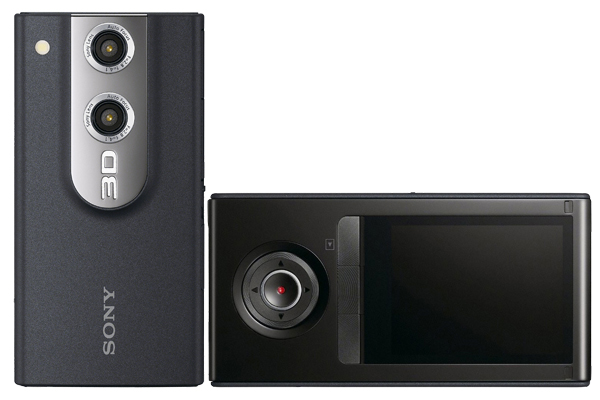
When 3D is brought up in most conversations, whether people are fans of the ever-growing format or not, two things tend to come to mind; the dislike for 3D glasses, and how expensive the technology can be. These two topics have turned into a sticky point for consumers while big companies like Sony are hard at offering 3D in whichever way they can. Currently, Sony Pictures has released 3D films like The Green Hornet, The Smurfs and will be releasing the upcoming The Amazing Spider-Man which has been shot in native 3D. In the meantime, their PlayStation division has an ever-larger list of 3D games with titles like Gran Turismo 5, Killzone 3 and the highly anticipated Uncharted 3. Of course, 3D content is without an avenue to playback the medium and so to address the cost and availability of the format, Sony this fall is releasing a PlayStation branded 3D TV for $499 which includes Resistance 3 (which is 3D compatible) and a pair of 3D glasses. Sony also knows that, in order for the 3D format to advance, they cannot just rely on professional content. No format has ever survived without availability to the everyday consumers, and thats where the Bloggie 3D steps in for Sony.
The Sony Bloggie 3D (MHS-FS3) is designed to break the stigma of 3D and address the two sticking points of 3D. First, the Bloggie 3D, which is capable of recording in both 2D and 3D, is priced at $249 which automatically makes it accessible to a large demography. Second, the Bloggie 3D is capable of playing back 3D footage right on screen without the need of 3D glasses. We’ve long at the site been using the Bloggie Touch as our main source of capturing footage when at an event, seeing that it would only be fair to use the products that we talk about. So two days prior to Comic-Con, we trooped out to our local Best Buy to buy a Bloggie 3D (yes, we have to purchase all of our review products) and put it to the ultimate test. You see, in order for a format like 3D to succeed, it has to be able to form to your current workflow and lifestyle. Sure we can make tweaks here and there but if it requires us to completely change our flow to make it work, then the technology has failed. Comic-Con presented the perfect opportunity, seeing how we were going to cover the event with our Bloggie Touch anyways. The question then was, can we substitute our Bloggie Touch with a Bloggie 3D and still have a successful Comic-Con. Hit the jump for our full review, as well as sample video and photos.
The Build:
From the minute you open the Bloggie 3D box till the minute you place the device away, you can feel that there is some great quality behind it. The plastic housing that surounds most of the Bloggie has a nice black coat to it while feeling soft and smooth in the hand. And although it is plastic and not aluminum like the iPod Touch, it never feels cheap in your hands and you never feel like you are going to break it. Weighing in at 120g (4.2oz.), the Bloggie 3D never feels heavy in your hand and quickly disappears when placed in your pocket or purse, something that is a blessing when you might be also carrying your iPhone and digital camera.
The Hardware:
Now let’s talk about what’s actually underneath the hood of the Sony Bloggie 3D. When it comes to recording, users are presented with a few different options for 2D and 3D recording, which will also affect the outcome of your recording time given. With a built-in 8GB of memory (and no, you can’t expand it), the Bloggie 3D gives you the following recording times in MPEG-4 format and stereo audio:
- 3D: 1080/30p = 80 min.
- 2D: 1080/30p = 80 min.
- 2D: 720/60p = 160 min.
- 2D: 720/30p = 240 min.
Note that 3D recording can only be achieved in 1080p, which is actually fine for us. Besides recording, the Bloggie 3D can also take 2D and 3D pictures as well in up to 5 megapixels. Like before, digital zoom (4x), self timer (2 sec. & 10 sec.), image stabilization, and face detection with up to 8 faces (2D mode only) are back as well.
As we mentioned above, one of the selling points of the Bloggie 3D is its capability of playing back the recorded 3D footage without a need for 3D glasses. For those of you who do own 3D televisions, there is also an HDMI out port for you to view your 2D and 3D content on own TV. Of course for the many of us us who don’t own a 3D TV, the Bloggie 3D is equipped with a 2.4-inch LCD screen that can again play both 2D and 3D content. For those of you who own the Bloggie Touch, keep in mind that, due to the different technology required for the LCD screen to playback 3D without glasses, the touchscreen functionality is lost and, instead, there are 3 black buttons that lay discreetly next to the LCD screen, as well as a circular buttons surrounding the record button. Whether it’s because of the lack of touchscreen or Sony wanting to keep their lineups similar, the menu system has also been changed and will be very familiar to anyone who has ever used a Cybershot camera or Handycam camcorder from Sony.
The screen itself is very much like the previous Bloggie units. When in 2D mode, you see a vivid screen with no loss of quality, due to the different nature of the 3D technology that’s incorporated in. Once you are ready to shoot in 3D, simply click the 3D icon and your screen will fade to black and reappear in 3D mode.
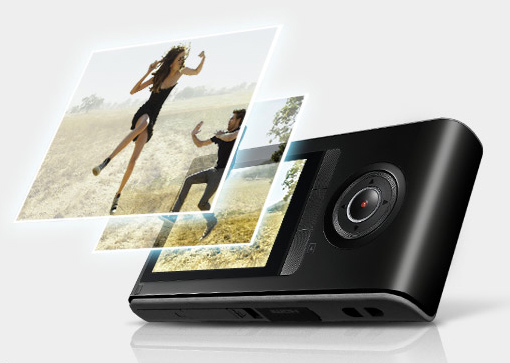
The 2D Video:
As we’ve discussed before, the Bloggie 3D is also capable of recording videos in 2D. Sony knew that designing a camera with 3D as the only option would limit the product’s success in terms of sales and so they smartly allow you to easily shift between 2D and 3D. 2D, which is the system standard, works much like the previous Bloggie’s. You have a single button that enables you to start and stop recording. With a mere second to enable the recording, the Bloggie 3D does a fairly good job at getting you into recording from the time you turn on the camera as fast as possible with no sub-menus required to access to core features. For those who want a little more fine tweaking, you can always adjust the resolution of the 2D camera:
- 1080p 30FPS
- 720P 60FPS
- 720P 30FPS
While all these are fairly standard and familiar to those who’ve used previous models like the Bloggie Touch, the new Bloggie 3D does have a few new welcome tricks up its sleeve. First, you will note a small balm near the camera’s lens which, as you have guessed, is an LED flash. A simple left click on the scroll wheel will enable you to turn on the LED flash, which can be convenient during late-night movie recording. Keep in mind that the LED’s effect is greatly reduced outdoors so the best use of it will be indoors. However, the biggest welcome feature is the lack of auto focus, which plagued the Bloggie Touch. This time, Sony opted for a fixed focal point for the camera’s lens (which is probably due to the 3D). With a fixed focal point, your video is now in focus no matter how far you look or who steps close to the camera, versus the Bloggie Touch which will try to compensate for movement. Though the auto focus sounds great in theory, the ending result always turned into your video potentially going in and out of focus as the Bloggie would try to find what it thought would be the right focus point. Now, the Bloggie 3D is in focus, all the time.
When it comes to the actual video quality of 2D footage, the Bloggie 3D is capable of capturing accurate colors with no haze or noise. Colors in both the foreground and background stay true and accurate with no bleeding to speak of. Movement is also crisp, no matter if you are the one moving or if the subject is moving. Panning seemed to be a little miss in landscape view, however, where the camera produced a slightly-jittering video playback. However, this may be avoidable with 720p 60FPS recording while our video was instead recorded at 1080p 30FPS which gives you a higher resolution but less frames, which can cause fast-paced movements to not be as smooth. With a stereo mic built in while the previous Bloggies came with a mono mic, and face detection up to 8 faces, the Bloggie 3D is able to up its predecessor in every way possible, giving you a fast recording pocket sized camera.
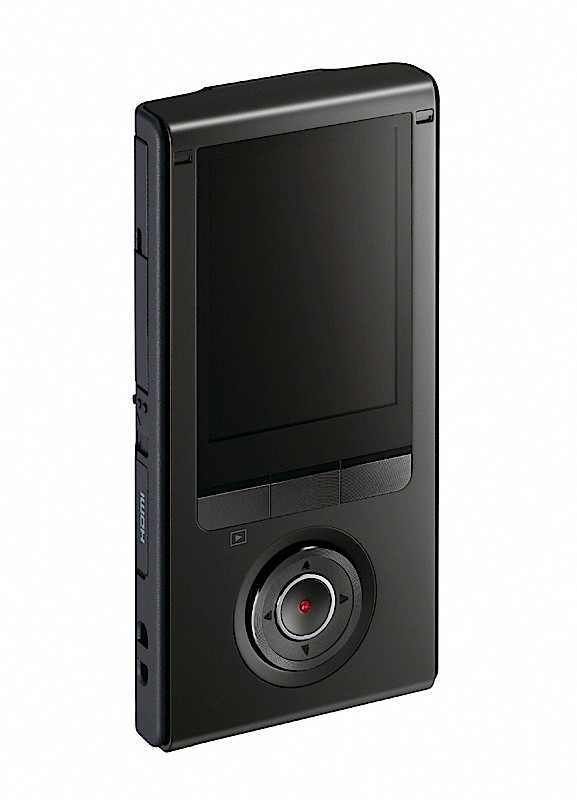
The 3D Video:
Of course, if you are reading this review and have read this far (or jumped to this part), you know that 2D is so last year and that the real star of the show is the Bloggie’s 3D capabilities. As we stated previously, the Bloggie always boots into 2D mode and does it very quickly. However, for those who look a bit further, they will note a 3D button, right next to the LCD. When clicked, your screen will turn off for a second and now in your hands, you have a transformed pocket camera. One that has both lenses now activated and one that is showing you 3D, in real time with no special glasses required. But before we dive too much further, some tech specs that we need to take note of which change when we switch to 3D. When in 3D recording mode, the Bloggie 3D looses the face detection capability and drops all 720p recording options in favor of just 1080p which is fine by us! Also, the Bloggie’s 4x digital zoom stops to function as well but lets face it, chances are that your digital zoom footage wasn’t going to look good anyways so not a big loss if you ask us.
When in 3D mode, it might take a second or two for your eyes to adjust, but no matter how you view the screen, you will immediately note the depth that your video has. Previous Sony Cybershot cameras could take 3D pictures, but you would have to tilt your camera from right to left to see the 3D effect. The Bloggie 3D’s hybrid 2.4-inch LCD, though, will show you 3D no matter how you hold it. However, unlike the 2D mode, you will immediately be able to see the loss of color on your screen. This is due to the nature of the new screen used, which is capable of displaying 3D without glasses, but I have to stress that this loss of color does not transfer to your actual video. Once in 3D mode, which is only accessible via landscape mode, due to the specific alignment that the camera’s dual lenses require, the Bloggie 3D in 3D mode is just as responsive as it is in 2D mode. The camera still holds a fixed focal length, allowing you to look whichever way while holding your content in focus and colors come out as you expect them. Night footage is a different story—and a hard one to judge—as every scenario is different with the amount of light and color of light available. Still, for a camera that can slide out of your pocket and record in 3D, the Bloggie 3D does an admirable job at night, but grain will be present.
Another nice thing about the Bloggie’s 3D capabilities is the format that it chooses to record in: MP4. This makes it universally accessible to any computer (Mac or PC) or device. Even better is how the Bloggie captures the 3D footage. Instead of somehow layering your video on top of each other or placing them in separate files, your video is placed side-by-side in the same video file with a left and right channel. For those who have higher-end editing software like Avid or a more consumer-friendly one like Sony Vegas Pro, this makes the job of editing your 3D content infinitely easier as you don’t have to worry about creating different workflows for each eye and keeping track of them. Just as easily, if you would like to export your footage in 2D, you simply need to crop one eye— and voila!— you will have 2D footage.
If YouTube is your destination of choice, then life gets even easier. After your 3D video is uploaded to YouTube, you need only to click on your video (not in your videos channel but in a normal viewing screen, as if somebody was about to watch your video) then click “edit video details”, enable “3D Video” and choose “side by side: left video on the left side”. After this, a 3D icon will appear next to your video allowing users to go back and forth between 2D and 3D video mode without any further editing from you. Of course, for those who have a 3D television at home (and no, you don’t need to have a Sony 3D TV), you can also play back your 3D content via the PlayStation 3D or other 3D capable devices.
Picture Quality:
Like previous models, the Bloggie 3D packs a still camera, this time coming in at 5 megapixels which, like the video mode, is capable of taking 2D and 3D pictures. Because of a lack of a 3D monitor on our end, we unfortunately couldn’t give the 3D pictures much testing. With no way of down-converting a 3D picture to 2D, the idea of 3D pictures is probably even further out than the normalization of 3D as a norm format until most devices around you are capable of displaying 3D pictures or automatically converting them. 2D pictures, like video recording, are a breeze again, thanks to the dedicated camera button, which is next to the on and off switch. The quality of the pictures is a different matter, and a hit or miss depending on the circumstances. Much like the 2D video, color quality is accurate but the actual pictures are plagued with haziness or grain. This is especially true in low-light situations, though the LED flash can make a big difference in the quality. Outside photos, as expected, do turn up the quality but in general, though a nice thing to have around, you won’t be ditching your iPhone 4 or Cybershot camera for the Bloggie 3D’s camera.
Verdict:
For a first-generation, pocket-sized 3D camera which comes in at consumer-friendly price of $249 MSRP, the Bloggie 3D is a knockout hit for Sony. Capable of recording 1080p video in both 2D and 3D with no glasses required for playback, the Bloggie 3D is capable of providing great battery life on a crisp screen, while being as easy to use—if not easier—than any other MP4 camera on the market, without dumbing down the experience. Sony’s goal was to show consumers that recording in 3D is not only attainable to most, but it is also practical, and the Bloggie 3D is a testament to that. Though the camera’s picture quality is relatively lacking, we doubted that this was going to replace anybody’s primary camera, no matter how good the picture quality might have been. In the end, the Bloggie 3D is the answer to every naysayer of 3D who says the format is too expensive or that 3D glasses ruin the experience while paving the way for a future where all of our content is recorded in 3D and is played back without 3D glasses. If marketed right, the Bloggie 3D is to 3D what the first consumer HD camcorders was to HD, which is now the norm.
Checkout our video review as well which features the Bloggie 3D’s 2D video.
8/10
The Good:
Solid Build
2D & 3D Recording
Great Battery Life
The Bad:
Lacking Photo Picture Quality
2D Video Could Be Better


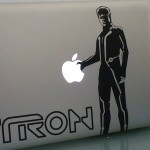


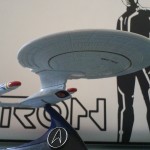



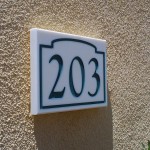




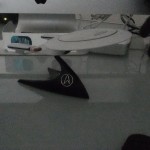
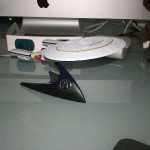
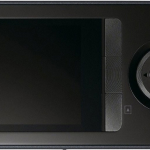
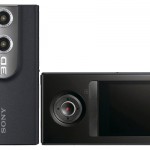
You must be logged in to post a comment.